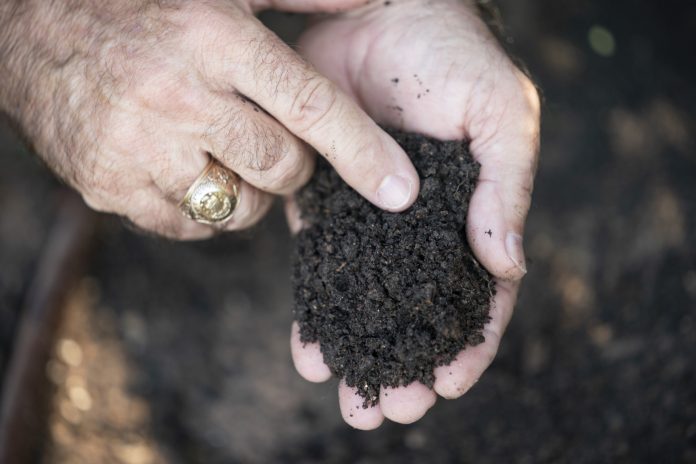
By Brooke McDonald
Why should I get my soil tested is a question asked by everyone from home gardeners planting their tomatoes to farmers planning out their crop rotations and homeowners looking to keep a lush lawn.
Jake Mowrer, Ph.D., Texas A&M AgriLife Extension Service extension associate professor, Soil Nutrient and Water Resource Management in the Texas A&M College of Agriculture and Life Sciences Department of Soil and Crop Sciences, said soil testing is important because it determines three things:
- Existing nutrients of the soil.
- Any nutrient deficiencies and needs.
- Potential growing constraints.
“Soil testing measures the nutrients and other aspects of soil fertility related to crop, garden and ornamental plant growth,” Mowrer said. “Indirectly, soil water is important in that nutrients must be dissolved in it to be taken up by plants.”
Establishing the right fertilizer and nutrients
Mowrer said soil tests are important to home gardeners because they provide a guide for your plants’ nutrient needs and help maximize yields efficiently.
“Soil testing does two important things. First, it measures the amount of nutrients your soil will provide to a plant during the growing season,” Mowrer said. “Second, it establishes the basis for making fertilizer recommendations to make up the difference between what the soil provides and what the plant requires to complete its growth cycle.”
Mowrer said soil reports empower gardeners to manage nutrients from fertilizers, manures, composts or other amendments in a way that ensures plant health and avoids nutrient escapes that can harm water resource quality.
Soil tests will commonly provide information on soil pH and salt content, as well as the amount of macronutrients like nitrogen, phosphorus, potassium and calcium and micronutrients such as zinc, iron, copper, and manganese. Additional tests may be performed to provide information on soil organic matter, or the amount of limestone required to correct an acidity problem.
Knowing the soil test results is a huge first step when looking to improve your overall plant and soil health. Something as simple as knowing which fertilizer to buy for your specific garden soil and plants could make a world of difference in your own home garden.
When is the best time of year to have your soil tested?
“For example, a farmer growing corn should sample and test in December or January to ensure results are received in time to purchase and apply fertilizer ahead of spring planting. However, wheat sown in October or November should be preceded with soil testing in July or August,” he said.
Oftentimes, knowing when to get a soil test done can be half the battle. Mowrer said soil testing should definitely be done prior to any decision about purchasing or using fertilizers. And, the answer depends on what you are growing and when you are planting.
As for home gardeners, Mowrer recommends testing in January or February for something like tomatoes when they need to be transplanted in March.
The benefits of testing your soil as a homeowner
Soil tests can help homeowners avoid applying too little or too much fertilizer and other amendments.
“Many homeowners and landscape service providers tend to over apply fertilizers to ensure a beautiful lawn or productive garden,” Mowrer said. “However, soil testing solves the mystery with real data you can use to avoid both under-application and over-application.”
Mowrer said soil test results let homeowners accurately target their garden soil or turfgrass and flower beds nutrient needs and be environmental stewards at the same time.
With soil testing, homeowners can soon have the perfect balance of nutrients and fertilizer to sprout the home gardening projects and landscapes of their dreams.
Get your soil tested today
For more information on testing your soil and submitting a sample, visit the Texas A&M AgriLife Extension Soil, Water and Forage Testing Laboratory at soiltesting.tamu.edu. You can also contact your local AgriLife Extension office and inquire about the process there. Soil test results from the lab will take two weeks to be returned to the sender.



